
Sandro Botticelli Painting Reproductions 4 of 5
1445-1510
Italian Quattrocento Painter
Sandro Botticelli, born Alessandro di Mariano di Vanni Filipepi in 1445, was one of the most enigmatic and influential painters of the Florentine Renaissance. His name resonates with two iconic paintings: "The Birth of Venus" and "La Primavera," works that have come to symbolize the Renaissance for modern audiences. Botticelli’s art, filled with grace, mythological beauty, and a deep reverence for religious themes, remains a testament to a time when Florence was the cradle of artistic innovation.
Botticelli’s nickname is a curious one, derived from his older brother Giovanni, a pawnbroker who was called Botticello, or “Little Barrel.” This familial quirk stuck with Alessandro throughout his life, though it belies the lyrical and delicate nature of his work. Like many artists of his time, Botticelli’s early life is somewhat shadowed in mystery, though much of what we know today is thanks to Giorgio Vasari’s "Lives of the Most Eminent Painters, Sculptors, & Architects." Vasari, always a colorful narrator, provides a blend of fact and legend that has shaped the artist’s posthumous reputation.
Born in Florence, Botticelli’s father was a tanner, and like many Florentine families, his early career path was determined by practical considerations. He was first apprenticed to a goldsmith, but it became clear that his heart lay elsewhere. His father wisely redirected him toward painting, placing him under the tutelage of Filippo Lippi, one of the most admired masters of the time. Lippi’s influence on Botticelli was profound. The older painter instilled in his pupil the techniques of panel painting and fresco, alongside a sensitivity to linear perspective, which would become central to Botticelli’s compositions.
Under Lippi’s guidance, Botticelli learned the fundamentals of figure drawing, costume design, and the soft, flowing lines that would later define his mature style. Even in Botticelli’s later works, echoes of Lippi’s elegant figures and pale, ethereal color palette remain, though Botticelli would eventually forge his own path with a much bolder use of color and line.
By 1470, Botticelli was established as an independent master with his own workshop in Florence. His early work, such as "Fortitude" (1470), already demonstrates a striking command of composition and character. These early paintings, like the paired panels "Judith and Holofernes", exhibit Botticelli’s growing mastery of the human form and his ability to convey psychological depth through gesture and expression.
Botticelli’s artistic maturity came around 1478-1481, when he began to abandon any tentativeness in his compositions. His figures took on a fluidity and vitality that gave them a presence unlike anything seen before. His work now fully integrated figures into their settings with harmonious balance. During this time, he would also become one of the few painters able to translate narrative texts - whether the biographies of saints or the complex poetry of Dante’s "Divine Comedy" - into pictorial form with an economy and elegance that made his compositions both dynamic and timeless.
Religious subjects played a crucial role in Botticelli’s oeuvre. His "Madonna and Child" paintings, such as those in the National Gallery of Art and the Musée du Petit Palais, reveal his ability to render deeply spiritual scenes while maintaining a sensitivity to the human experience. The Virgin Mary in Botticelli’s works is always a regal, almost otherworldly figure, yet she is imbued with an inner pensiveness, an emotional weight that speaks to Botticelli’s ability to infuse his figures with both grace and introspection.
Botticelli’s artistic range extended beyond devotional works. His secular commissions, particularly his portraits and mythological paintings, were equally celebrated. His portrait of "Giuliano de’ Medici", painted after the nobleman’s tragic assassination in the Pazzi conspiracy of 1478, captures both the dignity and loss felt in Florence after his death. But it was Botticelli’s ability to transform the ancient myths into allegories for love, beauty, and virtue that solidified his place as one of the most innovative painters of the Renaissance.
In the mid-1470s, Botticelli created "La Primavera" and "The Birth of Venus", two of his most iconic works. These mythological scenes, painted for the Medici family, particularly for Lorenzo di Pierfrancesco de’ Medici, are rich with allegory and symbolism. "La Primavera" presents an allegory of love’s renewal and marriage’s fruition, while "The Birth of Venus" celebrates the divine origin of beauty itself. The figures in these paintings, whether Venus, the Three Graces, or Mars, are rendered with an otherworldly beauty, their forms idealized yet anchored in a delicate humanity. These works are imbued with the intellectual spirit of the Florentine Renaissance, where Classical mythology, humanism, and courtly love intersect.
Botticelli’s mythological paintings do not simply illustrate familiar stories. Instead, they reimagine the ancient world through the lens of Florentine humanism. His Venus is not just the goddess of love; she represents an ideal of divine beauty, her arrival a metaphor for the transformative power of art and love. The intricacy of these compositions, where every gesture and figure carries symbolic weight, showcases Botticelli’s brilliance in weaving together the intellectual and the aesthetic.
Despite his success, Botticelli’s later years were marked by a dramatic shift in style and subject matter. Influenced by the religious fervor of Girolamo Savonarola, the firebrand Dominican friar who temporarily seized control of Florence, Botticelli’s work became more introspective, even apocalyptic. His "Mystic Nativity" (1500) reflects this turn toward religious intensity. Gone are the ethereal nymphs and Classical deities of his earlier works; instead, Botticelli presents a vision of spiritual redemption and divine wrath. The figures in his later paintings become elongated, almost mannerist, their gestures more exaggerated as if to convey the urgency of their religious message.
Savonarola’s rise and the subsequent fall of the Medici significantly impacted Botticelli’s later career. Vasari suggests that Botticelli may have even burned some of his secular works in the infamous "Bonfire of the Vanities" in 1497, though this claim remains speculative. What is clear is that the political and religious upheavals of Florence deeply affected Botticelli’s art and life.
In his final years, Botticelli worked on a series of illustrations for Dante’s "Divine Comedy", a project that would remain unfinished at the time of his death in 1510. These drawings, like many of his later works, reveal a more somber, introspective artist, one still grappling with the balance between the earthly and the divine. Though Vasari paints a picture of Botticelli’s later years as financially difficult, evidence suggests that he remained relatively comfortable, receiving commissions until the end of his life.
Sandro Botticelli’s legacy is vast. His paintings embody the intellectual and artistic ideals of Renaissance Florence, where beauty, philosophy, and spirituality were intertwined. Botticelli’s art transcends time, his graceful lines and ethereal compositions continuing to inspire and captivate, reminding us that beauty, in all its forms, remains one of humanity’s greatest pursuits.
Botticelli’s nickname is a curious one, derived from his older brother Giovanni, a pawnbroker who was called Botticello, or “Little Barrel.” This familial quirk stuck with Alessandro throughout his life, though it belies the lyrical and delicate nature of his work. Like many artists of his time, Botticelli’s early life is somewhat shadowed in mystery, though much of what we know today is thanks to Giorgio Vasari’s "Lives of the Most Eminent Painters, Sculptors, & Architects." Vasari, always a colorful narrator, provides a blend of fact and legend that has shaped the artist’s posthumous reputation.
Born in Florence, Botticelli’s father was a tanner, and like many Florentine families, his early career path was determined by practical considerations. He was first apprenticed to a goldsmith, but it became clear that his heart lay elsewhere. His father wisely redirected him toward painting, placing him under the tutelage of Filippo Lippi, one of the most admired masters of the time. Lippi’s influence on Botticelli was profound. The older painter instilled in his pupil the techniques of panel painting and fresco, alongside a sensitivity to linear perspective, which would become central to Botticelli’s compositions.
Under Lippi’s guidance, Botticelli learned the fundamentals of figure drawing, costume design, and the soft, flowing lines that would later define his mature style. Even in Botticelli’s later works, echoes of Lippi’s elegant figures and pale, ethereal color palette remain, though Botticelli would eventually forge his own path with a much bolder use of color and line.
By 1470, Botticelli was established as an independent master with his own workshop in Florence. His early work, such as "Fortitude" (1470), already demonstrates a striking command of composition and character. These early paintings, like the paired panels "Judith and Holofernes", exhibit Botticelli’s growing mastery of the human form and his ability to convey psychological depth through gesture and expression.
Botticelli’s artistic maturity came around 1478-1481, when he began to abandon any tentativeness in his compositions. His figures took on a fluidity and vitality that gave them a presence unlike anything seen before. His work now fully integrated figures into their settings with harmonious balance. During this time, he would also become one of the few painters able to translate narrative texts - whether the biographies of saints or the complex poetry of Dante’s "Divine Comedy" - into pictorial form with an economy and elegance that made his compositions both dynamic and timeless.
Religious subjects played a crucial role in Botticelli’s oeuvre. His "Madonna and Child" paintings, such as those in the National Gallery of Art and the Musée du Petit Palais, reveal his ability to render deeply spiritual scenes while maintaining a sensitivity to the human experience. The Virgin Mary in Botticelli’s works is always a regal, almost otherworldly figure, yet she is imbued with an inner pensiveness, an emotional weight that speaks to Botticelli’s ability to infuse his figures with both grace and introspection.
Botticelli’s artistic range extended beyond devotional works. His secular commissions, particularly his portraits and mythological paintings, were equally celebrated. His portrait of "Giuliano de’ Medici", painted after the nobleman’s tragic assassination in the Pazzi conspiracy of 1478, captures both the dignity and loss felt in Florence after his death. But it was Botticelli’s ability to transform the ancient myths into allegories for love, beauty, and virtue that solidified his place as one of the most innovative painters of the Renaissance.
In the mid-1470s, Botticelli created "La Primavera" and "The Birth of Venus", two of his most iconic works. These mythological scenes, painted for the Medici family, particularly for Lorenzo di Pierfrancesco de’ Medici, are rich with allegory and symbolism. "La Primavera" presents an allegory of love’s renewal and marriage’s fruition, while "The Birth of Venus" celebrates the divine origin of beauty itself. The figures in these paintings, whether Venus, the Three Graces, or Mars, are rendered with an otherworldly beauty, their forms idealized yet anchored in a delicate humanity. These works are imbued with the intellectual spirit of the Florentine Renaissance, where Classical mythology, humanism, and courtly love intersect.
Botticelli’s mythological paintings do not simply illustrate familiar stories. Instead, they reimagine the ancient world through the lens of Florentine humanism. His Venus is not just the goddess of love; she represents an ideal of divine beauty, her arrival a metaphor for the transformative power of art and love. The intricacy of these compositions, where every gesture and figure carries symbolic weight, showcases Botticelli’s brilliance in weaving together the intellectual and the aesthetic.
Despite his success, Botticelli’s later years were marked by a dramatic shift in style and subject matter. Influenced by the religious fervor of Girolamo Savonarola, the firebrand Dominican friar who temporarily seized control of Florence, Botticelli’s work became more introspective, even apocalyptic. His "Mystic Nativity" (1500) reflects this turn toward religious intensity. Gone are the ethereal nymphs and Classical deities of his earlier works; instead, Botticelli presents a vision of spiritual redemption and divine wrath. The figures in his later paintings become elongated, almost mannerist, their gestures more exaggerated as if to convey the urgency of their religious message.
Savonarola’s rise and the subsequent fall of the Medici significantly impacted Botticelli’s later career. Vasari suggests that Botticelli may have even burned some of his secular works in the infamous "Bonfire of the Vanities" in 1497, though this claim remains speculative. What is clear is that the political and religious upheavals of Florence deeply affected Botticelli’s art and life.
In his final years, Botticelli worked on a series of illustrations for Dante’s "Divine Comedy", a project that would remain unfinished at the time of his death in 1510. These drawings, like many of his later works, reveal a more somber, introspective artist, one still grappling with the balance between the earthly and the divine. Though Vasari paints a picture of Botticelli’s later years as financially difficult, evidence suggests that he remained relatively comfortable, receiving commissions until the end of his life.
Sandro Botticelli’s legacy is vast. His paintings embody the intellectual and artistic ideals of Renaissance Florence, where beauty, philosophy, and spirituality were intertwined. Botticelli’s art transcends time, his graceful lines and ethereal compositions continuing to inspire and captivate, reminding us that beauty, in all its forms, remains one of humanity’s greatest pursuits.
111 Botticelli Paintings
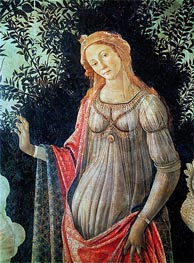
Primavera (Detail) c.1478
Canvas Print
$75.23
$75.23
SKU: BSF-6283
Sandro Botticelli
Original Size: unknown
Galleria degli Uffizi, Florence, Italy
Sandro Botticelli
Original Size: unknown
Galleria degli Uffizi, Florence, Italy

Flora (detail from the Primavera) c.1478
Oil Painting
$2154
$2154
Canvas Print
$54.82
$54.82
SKU: BSF-8668
Sandro Botticelli
Original Size: unknown
Galleria degli Uffizi, Florence, Italy
Sandro Botticelli
Original Size: unknown
Galleria degli Uffizi, Florence, Italy

Virgin and Child with an Angel c.1475/85
Oil Painting
$2985
$2985
Canvas Print
$56.98
$56.98
SKU: BSF-10180
Sandro Botticelli
Original Size: 85.8 x 59.1 cm
Art Institute of Chicago, Illinois, USA
Sandro Botticelli
Original Size: 85.8 x 59.1 cm
Art Institute of Chicago, Illinois, USA
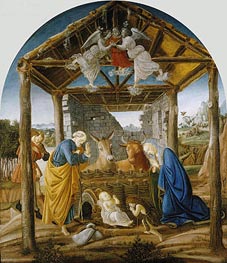
The Nativity c.1475
Oil Painting
$3967
$3967
Canvas Print
$119.29
$119.29
SKU: BSF-10181
Sandro Botticelli
Original Size: unknown
Columbia Museum of Art, South Carolina, USA
Sandro Botticelli
Original Size: unknown
Columbia Museum of Art, South Carolina, USA
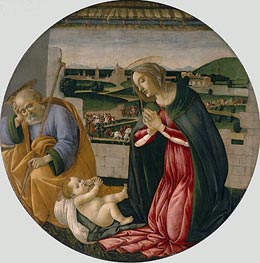
The Adoration of the Child c.1500
Oil Painting
$3437
$3437
Canvas Print
$82.91
$82.91
SKU: BSF-10182
Sandro Botticelli
Original Size: unknown
North Carolina Museum of Art, Raleigh, USA
Sandro Botticelli
Original Size: unknown
North Carolina Museum of Art, Raleigh, USA
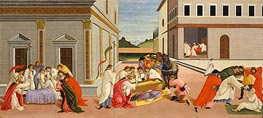
Three Miracles of Saint Zenobius c.1500/10
Oil Painting
$4352
$4352
Canvas Print
$54.70
$54.70
SKU: BSF-10183
Sandro Botticelli
Original Size: 67.3 x 150.5 cm
Metropolitan Museum of Art, New York, USA
Sandro Botticelli
Original Size: 67.3 x 150.5 cm
Metropolitan Museum of Art, New York, USA
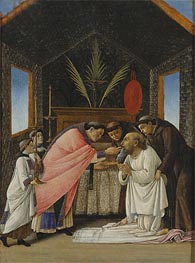
The Last Communion of Saint Jerome c.1490/95
Oil Painting
$2196
$2196
SKU: BSF-10184
Sandro Botticelli
Original Size: 34.3 x 25.4 cm
Metropolitan Museum of Art, New York, USA
Sandro Botticelli
Original Size: 34.3 x 25.4 cm
Metropolitan Museum of Art, New York, USA
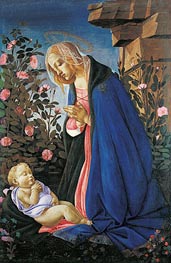
The Virgin Adoring the Sleeping Christ Child c.1490
Oil Painting
$2559
$2559
Canvas Print
$54.70
$54.70
SKU: BSF-10185
Sandro Botticelli
Original Size: 122 x 80.3 cm
National Galleries of Scotland, Edinburgh, UK
Sandro Botticelli
Original Size: 122 x 80.3 cm
National Galleries of Scotland, Edinburgh, UK
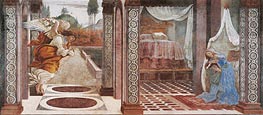
Annunciation n.d.
Oil Painting
$4969
$4969
Canvas Print
$54.70
$54.70
SKU: BSF-10186
Sandro Botticelli
Original Size: 243 x 550 cm
Galleria degli Uffizi, Florence, Italy
Sandro Botticelli
Original Size: 243 x 550 cm
Galleria degli Uffizi, Florence, Italy
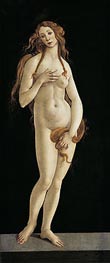
Venus n.d.
Oil Painting
$2278
$2278
Canvas Print
$54.70
$54.70
SKU: BSF-10187
Sandro Botticelli
Original Size: 158 x 68.5 cm
Gemaldegalerie, Berlin, Germany
Sandro Botticelli
Original Size: 158 x 68.5 cm
Gemaldegalerie, Berlin, Germany
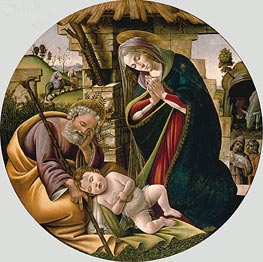
Adoration of the Christ Child c.1500
Oil Painting
$4108
$4108
Canvas Print
$82.91
$82.91
SKU: BSF-10188
Sandro Botticelli
Original Size: 120.8 x 120.8 cm
Museum of Fine Arts, Houston, USA
Sandro Botticelli
Original Size: 120.8 x 120.8 cm
Museum of Fine Arts, Houston, USA
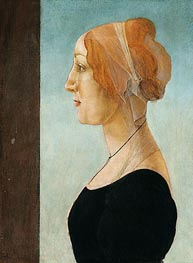
Portrait of a Lady n.d.
Oil Painting
$1779
$1779
Canvas Print
$54.70
$54.70
SKU: BSF-10189
Sandro Botticelli
Original Size: 49.5 x 35.6 cm
Private Collection
Sandro Botticelli
Original Size: 49.5 x 35.6 cm
Private Collection
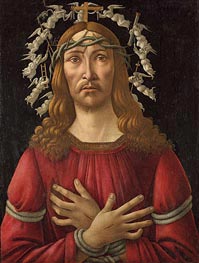
Christ as Man of Sorrows with Angels Halo n.d.
Oil Painting
$3195
$3195
Canvas Print
$62.71
$62.71
SKU: BSF-10190
Sandro Botticelli
Original Size: 69 x 51.4 cm
Private Collection
Sandro Botticelli
Original Size: 69 x 51.4 cm
Private Collection
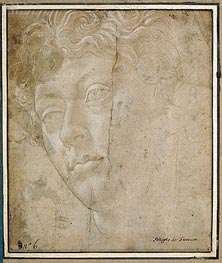
Head of an Angel n.d.
Paper Art Print
$52.21
$52.21
SKU: BSF-10191
Sandro Botticelli
Original Size: 20.5 x 17.9 cm
Musee des Beaux Arts, Rennes, France
Sandro Botticelli
Original Size: 20.5 x 17.9 cm
Musee des Beaux Arts, Rennes, France

Madonna Guidi c.1465/70
Oil Painting
$2447
$2447
Canvas Print
$91.66
$91.66
SKU: BSF-10192
Sandro Botticelli
Original Size: 73 x 49 cm
Louvre Museum, Paris, France
Sandro Botticelli
Original Size: 73 x 49 cm
Louvre Museum, Paris, France
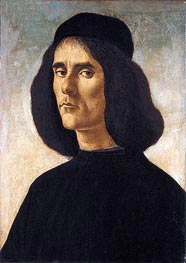
Portrait of Michael Marullus Tarchaniota n.d.
Oil Painting
$1577
$1577
Canvas Print
$54.70
$54.70
SKU: BSF-10193
Sandro Botticelli
Original Size: 49 x 35 cm
Private Collection
Sandro Botticelli
Original Size: 49 x 35 cm
Private Collection
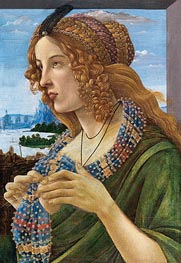
Allegorical Portrait of a Woman (Simonetta Vespucci) n.d.
Oil Painting
$2352
$2352
Canvas Print
$64.94
$64.94
SKU: BSF-10194
Sandro Botticelli
Original Size: 58.5 x 40.5 cm
Private Collection
Sandro Botticelli
Original Size: 58.5 x 40.5 cm
Private Collection

The Judgement of Paris n.d.
Oil Painting
$6930
$6930
Canvas Print
$54.70
$54.70
SKU: BSF-10195
Sandro Botticelli
Original Size: 81 x 197 cm
Private Collection
Sandro Botticelli
Original Size: 81 x 197 cm
Private Collection
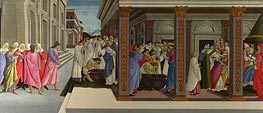
Four Scenes from the Early Life of Saint Zenobius ... c.1500
Canvas Print
$59.16
$59.16
SKU: BSF-10196
Sandro Botticelli
Original Size: 66.7 x 149.2 cm
National Gallery, London, UK
Sandro Botticelli
Original Size: 66.7 x 149.2 cm
National Gallery, London, UK

Four Scenes from the Early Life of Saint Zenobius ... c.1500
Canvas Print
$54.70
$54.70
SKU: BSF-10197
Sandro Botticelli
Original Size: 66 x 182 cm
Gemaldegalerie Alte Meister, Dresden, Germany
Sandro Botticelli
Original Size: 66 x 182 cm
Gemaldegalerie Alte Meister, Dresden, Germany

Virgin and Child with Saint John the Baptist c.1500
Oil Painting
$3523
$3523
Canvas Print
$54.70
$54.70
SKU: BSF-10198
Sandro Botticelli
Original Size: 123.8 x 84.4 cm
Boston Museum of Fine Arts, Massachusetts, USA
Sandro Botticelli
Original Size: 123.8 x 84.4 cm
Boston Museum of Fine Arts, Massachusetts, USA
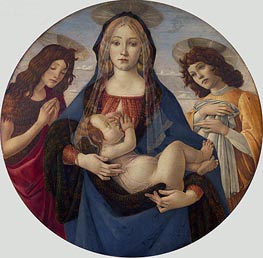
The Virgin and Child with Saint John and an Angel c.1490
Oil Painting
$4018
$4018
Canvas Print
$82.91
$82.91
SKU: BSF-10261
Sandro Botticelli
Original Size: 84.5 x 84.5 cm
National Gallery, London, UK
Sandro Botticelli
Original Size: 84.5 x 84.5 cm
National Gallery, London, UK
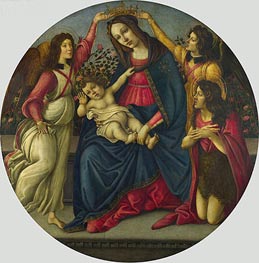
The Virgin and Child with Saint John and Two Angels c.1490/00
Oil Painting
$5422
$5422
Canvas Print
$82.91
$82.91
SKU: BSF-10262
Sandro Botticelli
Original Size: 114.3 x 113 cm
National Gallery, London, UK
Sandro Botticelli
Original Size: 114.3 x 113 cm
National Gallery, London, UK
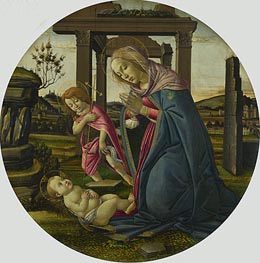
The Virgin and Child with Saint John the Baptist c.1482/98
Oil Painting
$3548
$3548
Canvas Print
$82.91
$82.91
SKU: BSF-10263
Sandro Botticelli
Original Size: 95.3 x 94 cm
National Gallery, London, UK
Sandro Botticelli
Original Size: 95.3 x 94 cm
National Gallery, London, UK